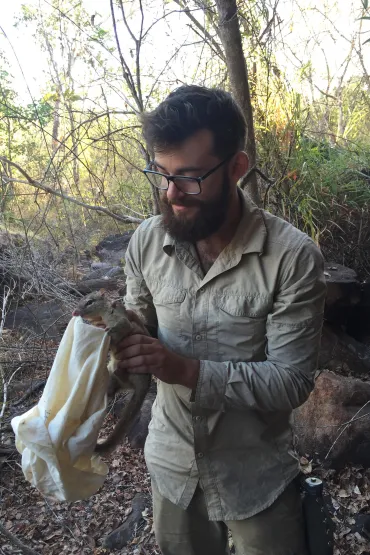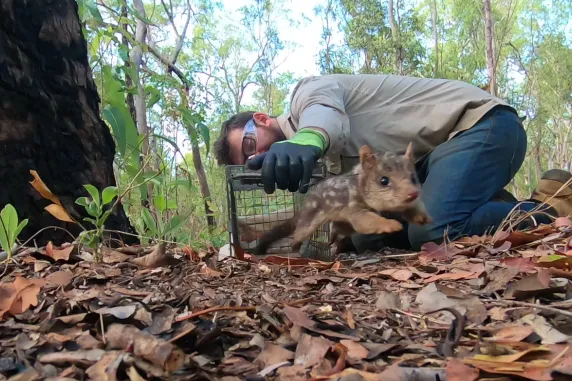More Quoll-ity research from RIEL PhD students
The Northern Quoll (Dasyurus hallucatus), like so many of Australia’s mammal species, is struggling. Australia has the worst mammal extinction record of any country; we have lost 34 of our 320 mammal species since European colonization - and many of our remaining mammal species are continuing to decline. The race is on to reverse this decline and ensure we don’t get extinction number 35.
The conservation of the Northern Quoll is in full swing. Around Australia, there are multiple concurrent projects focusing on isolated clusters of Northern Quolls. The quoll’s range once extended largely uninterrupted from South East Queensland to the Kimberley in Western Australia, but today, quoll populations are dotted around Australia’s northern coastlines. Gavin Trewella, a PhD candidate at the Research Institute for the Environment and Livelihoods (Charles Darwin University), is studying a population on Cape York Peninsula in Far North Queensland. “I aim to improve management outcomes and identify why other populations have become locally extinct by understanding the relationships northern quolls have to key threatening processes in these savanna systems.”
The factors involved in the decline of the Northern Quoll - as with most threatened species - are complex. Feral animals like the cat and fox directly predate on anything small enough for them to get their jaws on (such as a quoll), whilst altered fire regimes and the grazing of livestock have changed the habitat structure of huge swathes of the Australian continent. The Northern Quoll is a predator itself, and the introduction of the poisonous Cane Toad seems to have had the most dramatic impact on their numbers. The Cane Toad is here to stay, and Gavin hopes his research can help the quolls co-exist with their new, warty neighbours. “By improving management outcomes for the species, we can protect populations that have currently survived the cane toad advance from other threats and give the species a chance to bounce back.”
Gavin’s research involves some long, hot field seasons deep in the savannas of Weipa, Cape York, deploying camera traps and hopefully capturing a few quolls to track using GPS transmitters. So far, he has found that the quoll population in the area is restricted to bauxite plateaus that act as natural fire breaks, allowing a build-up of complex vegetation, giving the quolls many fallen hollows and a dense understory that helps them hide from feral cats. So far there are three plateaus that are confirmed to harbour quolls, but Gavin hopes that other populations still exist that are yet to be detected in surveys.
Gavin’s research takes place entirely outside of conservation reserves and is done in partnership with Rio Tinto. The success of his research hinges on a high level of stakeholder engagement to retain access to these remote areas and to continue to protect these habitats from degradation. If Gavin’s research is successful in improving quoll management, he hopes that one day the quolls will be able to descend from the bauxite plateaus and re-establish themselves more broadly across the landscape.
Related Articles
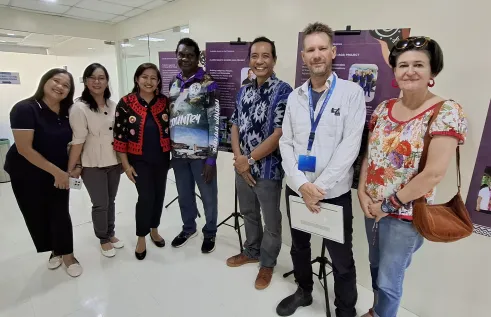
Environmental researchers and rangers visit Philippines as part of NT-Philippines exchange
CDU researchers and representative from Dhimurru Aboriginal Corporation completed a valuable exchange with Philippine leaders and rangers in June 2025.
Read more about Environmental researchers and rangers visit Philippines as part of NT-Philippines exchange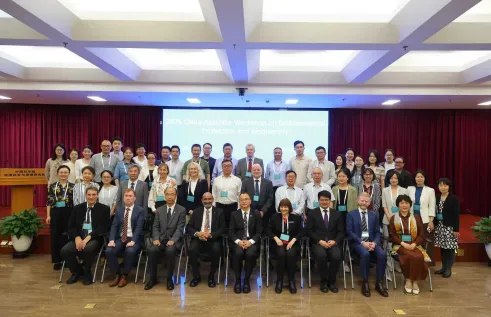
Professorial delegation discusses environmental protection and biodiversity in Beijing
Charles Darwin University (CDU) academics were among a high-level Australian delegation that visited the Chinese Academy of Sciences (CAS) last month.
Read more about Professorial delegation discusses environmental protection and biodiversity in Beijing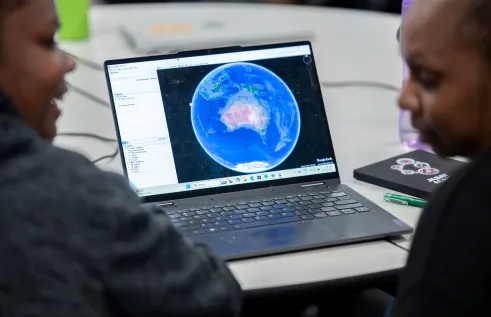
Rangers and PhD candidate unite at mapping workshop
How can technology support the revival of knowledge, its intergenerational transmission, and the defense of ancestral lands, all while ensuring cultural protocols are upheld?
Read more about Rangers and PhD candidate unite at mapping workshop
